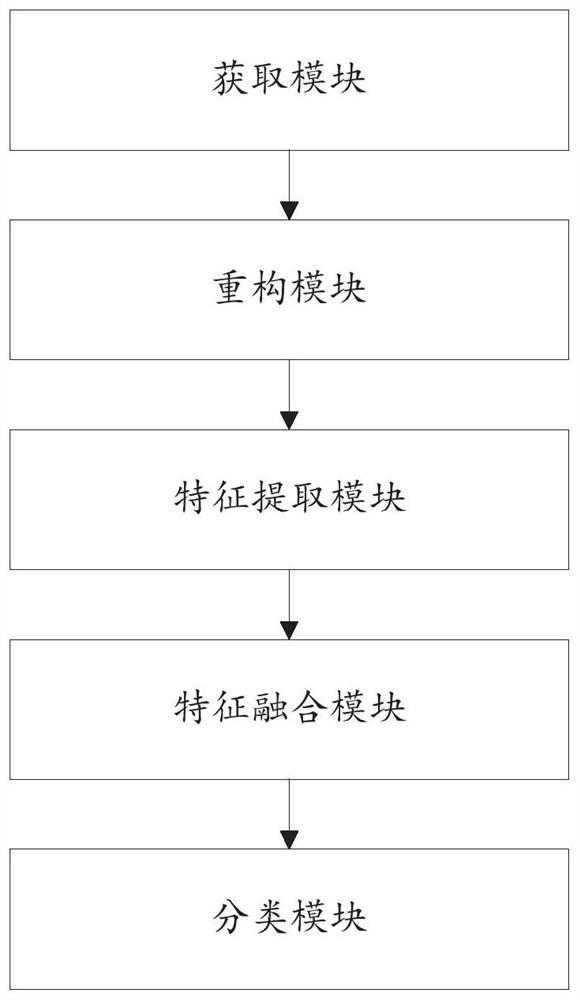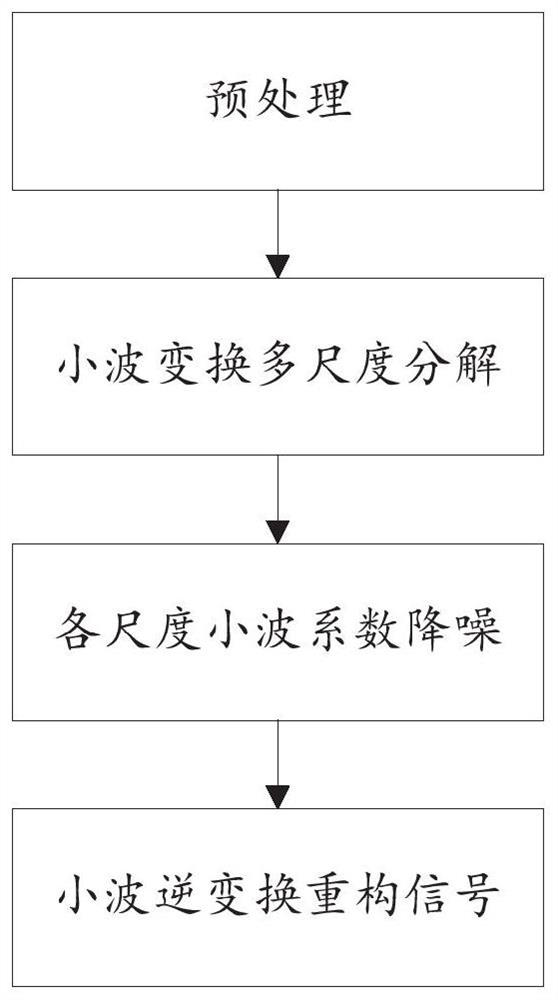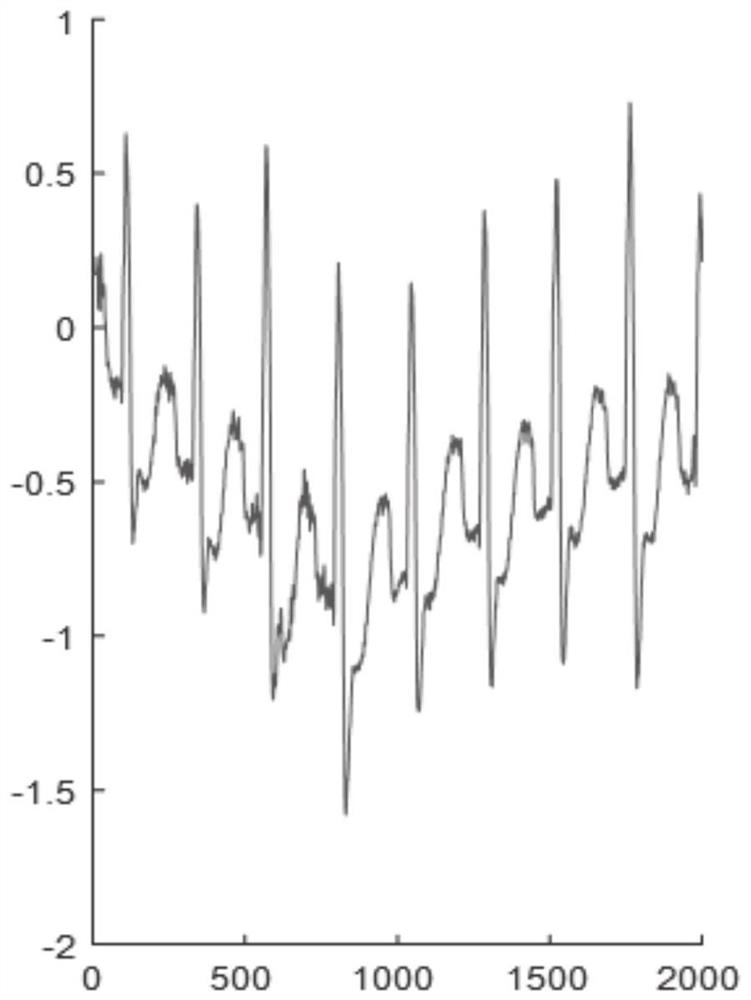Feature fusion transfer learning arrhythmia classification system based on 2D heart beat
A feature fusion and arrhythmia technology, applied in the field of heart rate duration classification system, can solve problems such as limited information, difficulty in further improving classification accuracy, and failure to fully reflect cardiac physiological changes, so as to improve classification accuracy, reduce cross-term interference, and ensure The effect of time-frequency focusing
- Summary
- Abstract
- Description
- Claims
- Application Information
AI Technical Summary
Problems solved by technology
Method used
Image
Examples
Embodiment 1
[0040] The present embodiment provides a classification system for arrhythmia based on feature fusion transfer learning of 2D cardiac beats;
[0041] Arrhythmia classification system based on feature fusion transfer learning of 2D heart beats, including:
[0042] An acquisition module configured to: acquire target ECG signals;
[0043] A reconstruction module configured to: reconstruct the target ECG signal from one-dimensional to two-dimensional ECG signal;
[0044] A feature extraction module, which is configured to: extract the first feature and the second feature from the two-dimensional ECG signal;
[0045] A feature fusion module configured to: perform fusion processing on the first feature and the second feature;
[0046] The classification module is configured to: input the fused features into the trained classifier, and output the arrhythmia classification result corresponding to the current target ECG signal.
[0047] As one or more embodiments, after the acquisit...
Embodiment 2
[0145] This embodiment also provides an electronic device, including: one or more processors, one or more memories, and one or more computer programs; wherein, the processor is connected to the memory, and the one or more computer programs are programmed Stored in the memory, when the electronic device is running, the processor executes one or more computer programs stored in the memory, so that the electronic device completes the functions of the system described in Embodiment 1 above.
Embodiment 3
[0147] This embodiment also provides a computer-readable storage medium for storing computer instructions, and when the computer instructions are executed by a processor, the functions of the system described in the first embodiment are completed.
PUM
 Login to View More
Login to View More Abstract
Description
Claims
Application Information
 Login to View More
Login to View More - Generate Ideas
- Intellectual Property
- Life Sciences
- Materials
- Tech Scout
- Unparalleled Data Quality
- Higher Quality Content
- 60% Fewer Hallucinations
Browse by: Latest US Patents, China's latest patents, Technical Efficacy Thesaurus, Application Domain, Technology Topic, Popular Technical Reports.
© 2025 PatSnap. All rights reserved.Legal|Privacy policy|Modern Slavery Act Transparency Statement|Sitemap|About US| Contact US: help@patsnap.com



